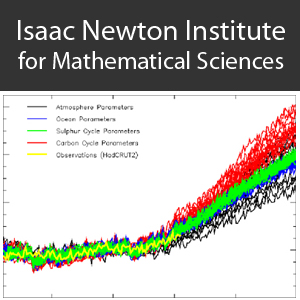Maximum entropy production and climate modelling: an overview of theory and applications
Duration: 9 secs
Share this media item:
Embed this media item:
Embed this media item:
About this item

| Description: |
Dewar, R (The Australian National University)
Monday 23 August 2010, 15:30-16:30 |
|---|
| Created: | 2010-08-24 16:57 | ||||
|---|---|---|---|---|---|
| Collection: | Mathematical and Statistical Approaches to Climate Modelling and Prediction | ||||
| Publisher: | Isaac Newton Institute | ||||
| Copyright: | Dewar, R | ||||
| Language: | eng (English) | ||||
| Distribution: |
World
|
||||
| Credits: |
|
||||
| Explicit content: | No | ||||
| Aspect Ratio: | 16:9 | ||||
| Screencast: | No | ||||
| Bumper: | UCS Default | ||||
| Trailer: | UCS Default | ||||
| Abstract: | Since the work of Onsager in the 1930s, Maximum Entropy Production (MaxEP) has been proposed in various guises as a thermodynamic selection principle governing the macroscopic behaviour of non-equilibrium systems. While some encouragingly realistic predictions have been obtained from MaxEP in a diverse range of non-equilibrium systems across physics, chemistry and biology – including climate systems – two outstanding questions have hindered its wider adoption as a mainstream predictive tool: What is the theoretical basis for MaxEP? And what is the appropriate entropy production to be maximised in any given problem? In this introductory talk I will summarise recent progress towards answering these questions, and outline some implications for the practical role of MaxEP in climate modelling. |
|---|---|
Available Formats
| Format | Quality | Bitrate | Size | |||
|---|---|---|---|---|---|---|
| MPEG-4 Video | 640x360 | 1.74 Mbits/sec | 1.96 MB | View | Download | |
| WebM | 640x360 | 131.85 kbits/sec | 58.91 MB | View | Download | |
| iPod Video | 480x270 | 129.2 kbits/sec | 57.72 MB | View | Download | |
| MP3 | 44100 Hz | 125.02 kbits/sec | 56.61 MB | Listen | Download | |
| Auto * | (Allows browser to choose a format it supports) | |||||

